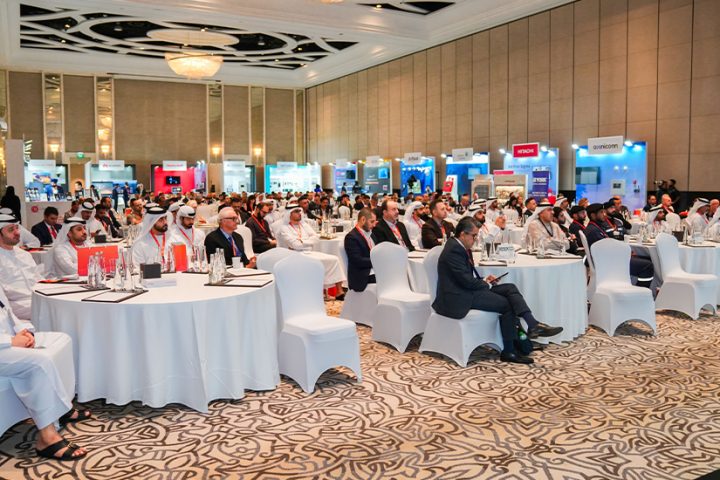As the Executive Director of Apla, the job role of Muhammed Arafath is to shape business vision as well as develop smart technology strategy to achieve Apla’s global business objectives. Arafath is focused on analysing opportunities, anticipating trends and creating solutions that help clients overcome their main pain points and streamline their operations. One of the key business objectives is to expand market reach by growing key business partner accounts and technology partnerships to expand the scope of the platform.
Apla Blockchain is a protocol for governance and digital infrastructure. Apla’s mission is to deliver the most secure and advanced blockchain protocol for customers, namely governments and businesses. Apla’s go to market is to establish an extensive, seamless network of partners to build the next generation digital infrastructure protocol and deliver business cases that are transformative and enriching.
Apla is a blockchain infrastructure protocol, building the next generation digital infrastructure for governments, industries and the collaborative and sharing economy. The requirement is to build a truly enterprise-grade public blockchain network that is secure, standardized and regulated with access to the banking system.
Apla’s core activities are building e-government blockchain application infrastructure, digitising assets, building regulated public network with a decentralised exchange, building private blockchain network for industry consortia and private organisations, delivering stable coins and regulated tokens on our platform. Progression is fast paced in the blockchain industry; therefore, it is important to be innovative and future-focused.
To attain this, there needs to be a structure for collaboration, where contributors participate from economies, industries and institutions. To sustain this, there needs to be an incentive structure and an execution model that sees through delivery life-cycle. At the core of Apla blockchain is complete digital transformation, wherein a blockchain platform changes the dynamics of the current scale and norm of operations, interactions and transactions.
Digital and business transformation are two separate but interlinked streams. Digital transformation is a journey and encompasses using the best operational practices supported by using the best digital practices. Business transformation is objective oriented and very subjective to an organisation. An organisation needs to continuously evaluate both the disciplines to stay relevant.
In the present-day business environment, innovative technologies are deciding the fate of companies, who cannot settle for just incremental improvements, they must periodically undergo performance transformations to be sustainable and profitable.
Business heads are tasked with ensuring the success of digital and business transformation initiatives. They need to communicate its significance, build a strong team of leaders, shape the desired change, and get personally involved. The transformation should be made meaningful for stakeholders in order for them to go extraordinary lengths and create a powerful story that will reinforce their commitment.
Business heads need to consider and share with others the answers to such questions as – why are we changing; how will we get there; and how does this relate to me. The transformation should be planned and targeted.
For a dream transformation project to be rolled out, the requirements are:
- Strong leadership team that sets goals and directions
- Stakeholders are aligned, supportive and believe in the transformation initiative
- Collaboration and user adoption
Everyone has a role to play in a performance transformation. The role of a business head is unique as they stand at the top of the pyramid and all the other members of the organisation take cues from them. One who gives only lip service to transformation will find everyone else doing the same. Those who fail to model the desired mind-sets and behaviour or who opt out of vital initiatives, risk seeing the transformation lose focus. And once the story is out, the uphill task becomes one of constant reinforcement.
Employees have so many things going on in the operations of their daily business that they do not always take the time to stop, think, and internalise. It is best to find three or four strategic concepts that sum up the right direction for the company and then to repeat them throughout the organisation.
Technology heads are responsible for any organisation’s digital transformation. They should use the latest technologies and deliver IT innovations that will keep the entire business process agile. They should actively identify organisational challenges, innovate solutions and lead in getting ideas implemented. They should inspire the C-suite to join in the mission to motivate other employees to embrace it and create an internal digital culture.
Technology heads need to keep the organisation’s vision in mind while building the digital processes, they should follow a standardised core set of technologies which can evolve around the business to accelerate digital transformation and keep the organisation, its employees, its partners and customers connected. They must also strive to understand how rapidly consumer behaviour and expectations change, in order for companies to flourish.
Key takeaways
- Digital and business transformation are two separate but interlinked streams.
- Digital transformation encompasses using the best operational practices supported by the best digital practices.
- Business transformation is objective oriented and very subjective to an organisation.
- Role of a business head is unique as they stand at the top of the pyramid and other members take cues from them.
- Technology heads need to keep the organisation’s vision in mind while building the digital processes.
- In the present-day innovative technologies are deciding the fate of companies.
A blockchain community requires contributors from economies, industries, institutions with incentive model explains Apla’s Muhammed Arafath.














